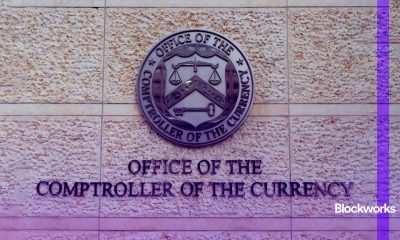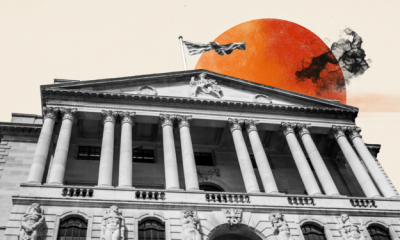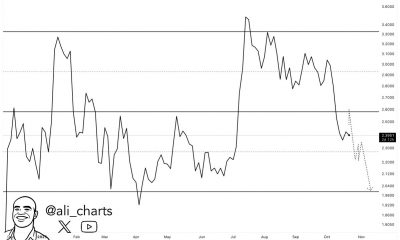

Cryptocurrency
The Lesson in Alameda-FTX About Government Regulation and Crypto (Opinion) – Crypto News
The scale of the financial damage to crypto investors last year was colossal. Not just from FTX International going under but also the rest of them: Three Arrow Capital, Celsius, Genesis, Gemini, Voyager Digital, and BlockFi.
The Bitcoin price still hasn’t recovered from the ongoing streak of crypto bankruptcies, although it deleted some of the losses from the FTX fiasco. Over crypto exchanges, BTC kept taking steep discounts all year. Every new bankruptcy headline plunged the Bitcoin price lower.
There’s no telling whether the most recent Bitcoin price rally to $21K is a breakout or a January bull trap. Meanwhile, last year’s insolvencies continue to unravel in bankruptcy and criminal court.
Bankruptcy lawyers said on Wednesday that FTX has found $5 billion inliquidassets. While under house arrest on a $250 million bail bond, Sam Bankman-Fried began blogging. on Substack on Jan 12. He wrote in a post entitled “FTX Pre-Mortem Overview” that:
“In November 2022, an extreme, quick, targeted crash precipitated by the CEO of Binance made Alameda insolvent.”
Notice the concluding point of SBF’s “post-mortem” is not that FTX didn’t have their customer’s money. It’s that a competitor’s CEO told the public that FTX didn’t have their customer’s money.
Sam Bankman-Fried wasn’t some unregulated cowboy on the digital frontier. Satoshi Nakamoto was. SBF was, in fact, a political megadonor who nurtured cozy relations with the US regulatory regime.
Furthermore, the TradFi attitude toward finance that plagued crypto last year is exactly why we need crypto. Bitcoin is supposed to fix this. So are other open-source, peer-to-peer ledgers.
How Wall Street TradFi Bros Ransacked The Buzz Surrounding Crypto
At the close of the year, Bloomberg Businessweek published a sequel to its Oct 2022 long-form presentation, “The Crypto Story.”
The follow-up piece was about Sam Bankman-Fried and the Alameda FTX foibles. The story is entitled “How Not To Play The Game.” The article deftly diagnoses the problem of TradFi imports to crypto:
“You might find yourself building out a snazzy user interface and a fast, clever trading algorithm, because those are fun and profitable things to do, but you might find yourself neglecting the accounting department, because that’s boring. You might get really good at attracting customer money, with your snazzy interface and your sense of fun, but also really bad at keeping track of the customer money with your lack of accountants and your sense of fun.”
Crypto is fundamentally a no-nonsense, hard-money, anti-Wall Street industry. But the TradFi bros turned it into Wall Street’s evil twin. They created a parallel crypto menagerie of financial shenanigans and accounting horrors:
“One imperfect but useful way to think about crypto is that it allowed for the creation of a toy financial system. There was already a regular financial system, a set of abstractions and procedures… And then crypto came along with a new set of stuff to do finance to.”
But the way veteran financial columnist Matt Levine describes it: Crypto needs more regulations. Where the article gets it wrong is leaving the influence of government out of the picture. Because the story does not address the influence of government regulation on the insolvency crises of the past year.
The way “How Not To Play The Game” tells it, the government was not at play in this game. But that is not exactly the case. The article itself advances some of the evidence against this characterization.
Because in it, the author tells about how “crypto” businesses resold the worst excesses of Wall Street as crypto products. These bad business ideas did not originate on Wall Street in a vacuum. They happened with the permission and even the support and design of regulators:
“This game was played by young people who came from the world of traditional finance, from banks and hedge funds and quantitative proprietary trading firms, people who already liked finance and wanted to play with a toy version of it they could shape however they wanted. “
Could the picture be any clearer? Crypto’s bubble was not driven by the humble miner running their ASIC rigs. It was driven by these Wall Street entrants who brought along with them the heavily regulated Wall Street’s reckless financial culture.
What else should investors expect from any substantial interventions by the government into crypto markets but more misaligned incentives and unintended consequences?
It’s US TradeFi Regulation That Hurts Investor Finances
It was the US financial regulatory regime that allowed the Dot Com bubble in 1999 and 2000. Regulators let people trade dot com stocks with huge market caps for glorified home pages.
The advocate itching to regulate cryptos looks and sees that 91% of altcoins from 2014 are now defunct and sees a reason to pass more rules for cryptos.
But they want regulation from the same authorities that encouraged the Dot Com bubble. They conveniently forget the track record of regulated securities performing the exact way that the crypto sector did in 2020 – 2022. For example, they ignore the Dot Com companies that spent hundreds of millions of dollars on their way to bankruptcy.
Moreover, it was regulators asleep at the wheel in the housing savings and loans crisis. That created a real estate and financial bubble from 2005 until 2007. By 2008 it had shaken the entire world economy into recession.
Vast government-sponsored enterprises, financial institutions like Fannie Mae and Freddie Mac, fueled the madness with low-interest loans for subprime mortgage customers.
Wall Street giants, with close regulatory partnerships with the government, invented mortgage-backed securities as an exotic fixed-income derivative for big financials to sell back and forth to each other.
By 2007 the chickens had come home to roost. Housing prices began to crater. At that point, the regulated traditional finance sector’s involvement with the bubble was beyond insane. It was unethical.
Berkshire Hathaway’s Warren Buffett and Charlie Munger would call it decadent and immoral. Well ahead of the housing bubble’s inevitable crash, Buffett and Munger warned about it.
In 2005, they considered the residential real estate bubble and the destabilizing effect of hedge funds on financial markets to be the biggest threats to America after a nuclear terrorist strike.
How Did Regulation Prevent The Above?
It was on the US financial regulators’ watch that these crises formed. And it was in traditional finance companies that were compliant with regulation if not directly responding to regulatory incentives.
The damage done to investors and household finances lasts to this day. The US Treasury estimates the housing crash cost the economy $19 trillion in household wealth.
Furthermore, it is the SEC that allows algorithmic trading logjams, arcane derivatives, and insane leveraged trading. That TradFi mess dressed up as “crypto” and made a ton of money while damaging many people’s finances. So that doesn’t make what FTX did the same as what Bitcoin created the crypto segment for.
Crypto is supposed to be a movement towards financial sanity, propriety, and honor. While the traditional finance world was going through the shocks of 2000 and 2008, so much for regulation, the world was blissfully unaware that Bitcoin would be the one answer to solve the problems of finance in our modern, connected, global world.
It was inevitable that forces of reaction would appropriate the good reputation and glamor of cryptocurrencies like Bitcoin. But these so-called crypto projects that conduct the funny money business as usual are counterfeit crypto, not the real thing.
What Happens When Crypto Gets Cozy With Government and Regulation
The crypto businesses that went under worst of all were those with the most government influence.
There were, of course, many reports that the SBF was very active in US federal politics after the FTX collapse. The non-profit group, Open Secrets, which keeps track of public federal election donation records, reported in November,
“Sam Bankman-Fried, the founder of the cryptocurrency exchange platform FTX, was a darling in some Washington DC policy circles. He proselytized for digital assets in testimony on Capitol Hill and gave more than $990,000 to candidates plus an additional $38.8 million to outside groups this election cycle, making him the sixth largest individual donor of the 2022 midterms.”
Before the fortunes of Alameda-FTX turned, SBF had planned to give over $1 billion to support its chosen candidates and issues in the 2024 elections.
The Winklevoss brothers and their Gemini exchange are also very cozy with Washington. Like SBF, they bring the big finance mindset to crypto and are very active in lobbying and talking to regulators. Their advice to Mark Zuckerberg back when Facebook was working on Libra was:
“Work with regulators. Talk to them. You know, we definitely went through the front door, and we tried to educate the regulators and shape the regulation in a thoughtful manner because if you get the regulation wrong it can stifle innovation, but the right regulation allows for innovation to flourish, and we think we’ve achieved that right balance with New York.”
So there have been plenty of reports of the involvement of these businesses with regulators. But has anyone drawn the connection that the TradFi regulatory mindset is what caused the insolvencies?
The regulatory mindset isn’t a business mindset. It’s a control function. It is not concerned with how to produce anything. It’s concerned with how to control an already productive system and how to freeze it against competition from new entrants to give it time to grow.
Crypto’s ethos is that it doesn’t need special treatment and protection. It doesn’t need regulatory entrenchment to thrive. Crypto thrives on openness and freedom, not barriers and regulation.
Bitcoin’s community hopes its great-grandchildren will use the money and that it will be more valuable than ever. It’s a currency started by a borderless, nationless online community. So it doesn’t see its future resting on TradFi government regulation. It sees its future in the code working as is.
Governance Through Trustless Code, Not Through Trusting Regulation
Cryptocurrencies are something that can be subject to government regulation. Government can make laws outright banning crypto, as China has. But crypto is not an agent of the government.
Companies, even private companies, are agents of the government. They register with the government, ostensibly comply with its regulations, and pay taxes out of payroll and profits.
While a cryptocurrency platform or its monies may be an object of government action, they are not a subject of government. They are more like commodity goods (like gold or oil) that way than like joint stock corporations.
Cryptos like Bitcoin are not constituted the way private, and public companies are. They are simply software scripts and databases of information that serve the platform’s users.
Bitcoin’s origin is not in regulation but in code and a market economy. A market economy is regulated automatically and naturally by its realities and the self-direction of its participants.
Meanwhile, crypto companies like FTX or Binance are agents of government and subject to its regulation the day they register with a government to engage in commerce. While Bitcoin and most cryptos are open-source projects, FTX, Genesis, Gemini, Three Arrows, Voyager, (etc.) were regulated private companies.
Now, that doesn’t mean they’re doomed from the start. Binance has remained solvent, and it’s a regulated private company. It’s even buying its rivals that failed in the insolvency crisis.
Many of the world’s most beloved brands and greatest fortunes were created by private and public companies under the direction of government regulation.
But Bitcoin is just one of the amazing new products that represent a complete paradigm shift away from government regulation. It belongs to a paradigm shift called open source, and the open source movement is just beginning to create exciting new possibilities for the world.
In open source, the greatest solutions to age-old human problems will be found in autonomous network governance.
Binance Free $100 (Exclusive): Use this link to register and receive $100 free and 10% off fees on Binance Futures first month ,terms,
PrimeXBT Special Offer: Use this link to register & enter POTATO50 code to receive up to $7,000 on your deposits.
-

 Cryptocurrency1 week ago
Cryptocurrency1 week agoStripe’s stablecoin biz seeks national bank trust charter – Crypto News
-

 Technology1 week ago
Technology1 week agoApple launches MacBook Pro 14-inch with M5 chip in India, price starts at ₹1,69,900 – Crypto News
-

 Metaverse1 week ago
Metaverse1 week agoTech is valued as if AI is the next smartphone. It isn’t. – Crypto News
-

 Cryptocurrency1 week ago
Cryptocurrency1 week agoBitcoin, Ethereum rebound following ‘largest single-day wipeout in crypto history’ – Crypto News
-

 Technology5 days ago
Technology5 days agoChatGPT remains the most popular chatbot globally but Google’s Gemini is catching up fast – Crypto News
-
Business1 week ago
Pro Says Ethereum Price is a Buy Despite Rising Liquidations and BlackRock Selling – Crypto News
-
Business1 week ago
Pro Says Ethereum Price is a Buy Despite Rising Liquidations and BlackRock Selling – Crypto News
-

 Metaverse1 week ago
Metaverse1 week agoWalmart teams with OpenAI for ChatGPT purchases. The retailer is ‘ahead of the curve’. – Crypto News
-
Business1 week ago
Nasdaq-Listed Webus Adopts XRP in New Tokenized Reward Platform, Eyes $20B Loyalty Market – Crypto News
-
Business1 week ago
Dogecoin Gets Major Utility Boost as Trump-Linked Thumzup Prepares DOGE Payments – Crypto News
-
others4 days ago
‘Floki Is The CEO’: FLOKI Surges Over 20% After Elon Musk’s Name Drop – Crypto News
-

 Cryptocurrency1 week ago
Cryptocurrency1 week agoWhy Are These Ripple (XRP) ETF Filings the Worst Idea Ever? Analyst Explains – Crypto News
-
Business1 week ago
Fed’s Stephen Miran Calls for Rapid Rate Cuts Amid U.S.-China Trade Tensions – Crypto News
-

 Cryptocurrency7 days ago
Cryptocurrency7 days agoIs Wave 5 Still Coming or a New Bull Trend Emerging? – Crypto News
-
Technology1 week ago
XRP News: Ripple Strikes Deal with Absa, Expanding Custody Footprint To Africa – Crypto News
-
Business1 week ago
Pi Coin Price Gears for Recovery as DEX and AMM Launch Revives Utility Hopes – Crypto News
-
others1 week ago
Cardano’s Charles Hoskinson Addresses Allegations of Diverting Treasury Funds – Crypto News
-

 others4 days ago
others4 days agoRisk-off sentiment drives selective equity positioning – BNY – Crypto News
-

 Metaverse1 week ago
Metaverse1 week ago‘Erotica for verified adults’: OpenAI to allow mature content on ChatGPT; Sam Altman vows to treat adults like adults – Crypto News
-

 Cryptocurrency1 week ago
Cryptocurrency1 week agoCelestia price reclaims $1 after crash to $0.27: TIA forecast – Crypto News
-

 Metaverse1 week ago
Metaverse1 week agoMint Explainer | Why Big Tech is rushing to build AI data centres across India – Crypto News
-

 Metaverse1 week ago
Metaverse1 week agoChatGPT ‘adult model’ plan: OpenAI’s Sam Altman reacts to criticism, says ‘not elected moral police’ – Crypto News
-

 Blockchain1 week ago
Blockchain1 week agoVisa Says Stablecoins Are Powering ‘a New Lending Space’ – Crypto News
-
Business1 week ago
Building Through the Downturn – Why Smart Money Is Watching XYZVerse – Crypto News
-
Business1 week ago
Gold vs Bitcoin – Peter Schiff Declares BTC Has Failed as Digital Gold, CZ Reacts – Crypto News
-

 Blockchain1 week ago
Blockchain1 week agoGhana Moves Toward Crypto Regulation Amid Rising User Adoption – Crypto News
-

 Cryptocurrency1 week ago
Cryptocurrency1 week agoCrypto markets turn red after Trump threatens to halt cooking oil imports from China – Crypto News
-
others6 days ago
Shiba Inu Price Eyes Recovery as Burn Rate Jumps 10,785% – Can SHIB Hit $0.000016? – Crypto News
-

 Blockchain5 days ago
Blockchain5 days agoTrump Confirms Meeting With Xi Jinping on Oct 31, Markets Rally in Response – Crypto News
-

 others4 days ago
others4 days agoAUD/USD rises on US-China trade hopes, Fed rate cut outlook – Crypto News
-

 Technology4 days ago
Technology4 days agoAmazon Web Services outage: Here’s how many users are impacted and the downtime costs – Crypto News
-
others4 days ago
Ethereum Price Targets $8K Amid John Bollinger’s ‘W’ Bottom Signal and VanEck Staked ETF Filing – Crypto News
-

 others1 week ago
others1 week agoEUR/GBP weakens to near 0.8700, French government plans to postpone pension reforms – Crypto News
-

 Cryptocurrency1 week ago
Cryptocurrency1 week agoCoinbase Plans to List Surging BNB After Previously Delisting Binance Stablecoin – Crypto News
-
![Nifty 50 Index Elliott Wave technical analysis [Video]](https://dripp.zone/news/wp-content/uploads/2025/05/Nifty-50-Index-Elliott-Wave-technical-analysis-Video-Crypto-400x240.jpg)
![Nifty 50 Index Elliott Wave technical analysis [Video]](https://dripp.zone/news/wp-content/uploads/2025/05/Nifty-50-Index-Elliott-Wave-technical-analysis-Video-Crypto-80x80.jpg) others1 week ago
others1 week agoDow Jones holds onto recovery levels as investors focus on earnings – Crypto News
-

 De-fi1 week ago
De-fi1 week agoCrypto Market Slides for Second Day as Bitcoin Dips Amid Geopolitical Tensions – Crypto News
-

 Cryptocurrency1 week ago
Cryptocurrency1 week agoHow to Create A Meme Coin For Free On Solana – Crypto News
-

 De-fi1 week ago
De-fi1 week agoLighter Distributes Points to Users Affected by Platform Outage – Crypto News
-

 De-fi1 week ago
De-fi1 week agoSony Enters U.S. Crypto Banking Race Amid Growing Institutional Interest – Crypto News
-

 Metaverse1 week ago
Metaverse1 week agoAll About AI Tech4Good Awards are back for the second edition. Apply Now! – Crypto News
-

 others1 week ago
others1 week agoUSD/JPY strengthens as Trump’s softer stance on China boosts US Dollar demand – Crypto News
-
others7 days ago
Stripe-backed Tempo Hires Ethereum Researcher Dankrad Feist After $500M Funding – Crypto News
-

 others6 days ago
others6 days agoGold crashes 2% from record high as Trump tempers threats on China – Crypto News
-

 Cryptocurrency6 days ago
Cryptocurrency6 days agoEthena (ENA) Price Outperforming: Only Reason – Crypto News
-

 others6 days ago
others6 days agoWe should not cut rates every quarter, but rate-cutting cycle not over – Crypto News
-

 Cryptocurrency5 days ago
Cryptocurrency5 days agoAster price tanks 20% as sell-off pressure hits altcoins – Crypto News
-
Business5 days ago
How Will “Unusual” US CPI Inflation Data Release Could Impact Fed Rate Cut, Crypto Market? – Crypto News
-

 Technology4 days ago
Technology4 days agoAWS says it has fixed the problem that crippled half the internet but many popular apps are still down – Crypto News
-
Business4 days ago
Binance Founder CZ Predicts Bitcoin Will Flip Gold’s $30 Trillion Market – Crypto News
-
Business3 days ago
Solana Price Eyes $240 Recovery as Gemini Launches SOL-Reward Credit Card – Crypto News
















